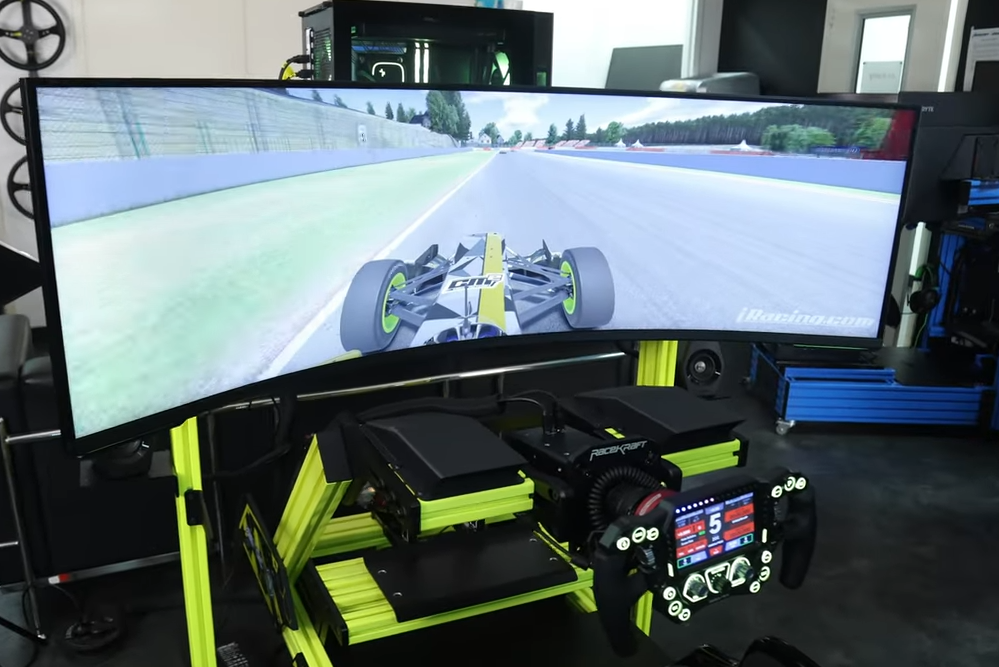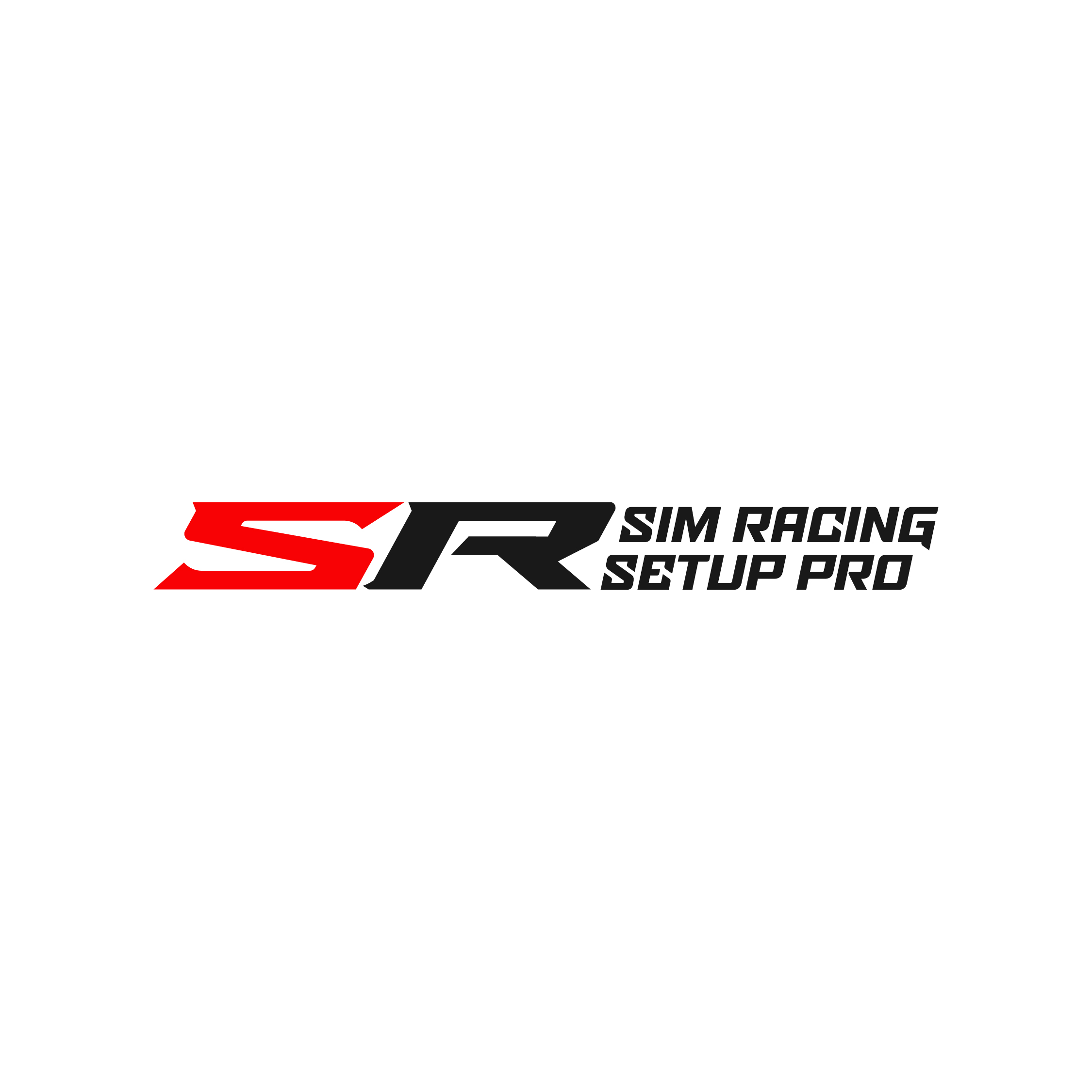
The Ultimate Beginner-to-Pro Guide
“Sim racing is not just a game—it’s a gateway to real motorsports, a professional esports discipline, and a technological revolution powered by AI and physics engines. Whether you’re a casual driver or an aspiring pro, this guide will take you from zero to racing hero.”
The Future of Sim Racing: Merging Virtual and Real Racing
Sim racing is no longer just entertainment—it’s a pathway to real-world motorsports.
1️⃣ The Future of Sim Racing: Where Virtual Meets Reality
Sim racing is no longer just entertainment—it’s a pathway to real-world motorsports.
Sim Racing as a Professional Training Tool
✅ Formula 1 teams (Mercedes-AMG, Red Bull, Ferrari) use simulators for driver development.
✅ GT Academy champions have turned sim racing skills into real-world GT3 race wins.
✅ Professional teams use iRacing and rFactor 2 to train drivers on real-world tracks before they compete in live races.
How Esports, AI & Real Racing Are Converging
✅ AI race engineers now analyze telemetry data and suggest real-time strategy changes.
✅ Neural steering & haptic feedback rigs replicate real driving conditions.
✅ Esports tournaments like F1 Esports & Le Mans Virtual now offer real-world contracts.
Key Takeaway: Sim racing isn’t just a game—it’s a legitimate training ground for motorsport careers.
2️⃣ Choosing the Best Sim Racing Platform: Console vs. PC
Your platform choice affects realism, competition, and career opportunities.
Console Sim Racing: Best for Beginners
| Feature | PlayStation / Xbox | PC Sim Racing |
|---|---|---|
| Best Simulators | Gran Turismo 7, Forza Motorsport | iRacing, rFactor 2, ACC, Automobilista 2 |
| Graphics | High-quality, but locked settings | Fully customizable, photorealistic mods |
| Physics Realism | Moderate | Highly realistic tire & track physics |
| Online Competition | Casual matchmaking | Esports and pro-level ranked racing |
| Hardware Support | Limited wheel options | Direct Drive wheels, motion rigs, triple screens |
| Cost | Lower startup cost | Higher investment, but scalable for long-term growth |
Best for Beginners: Consoles are great for casual racing and learning fundamentals.
Best for Esports & Career Growth: PC allows deeper simulation realism and high-level online competition.
3️⃣Essential Sim Racing Hardware: What You Need to Get Started
Sim racing hardware transforms the experience from an arcade game into a realistic motorsport simulator.
Best Racing Wheels: Direct Drive vs. Gear-Driven
| Budget | Wheelbase | Technology | Pros | Cons |
|---|---|---|---|---|
| Entry | Logitech G923 | Gear-driven | Affordable, good for beginners | Weak force feedback, limited realism |
| Mid | Fanatec CSL DD | Direct Drive | Stronger feedback, smooth | More expensive than gear-driven |
| Pro | Simucube 2 Sport | Direct Drive | High torque, extreme precision | High cost, requires rig setup |
| Elite | Simucube 2 Pro / Fanatec DD2 | Direct Drive | Used in professional racing simulators | Requires expensive rig, steep learning curve |
- Best Choice for Beginners: Logitech G923 or Fanatec CSL DD.
- Best for Pro-Level Training: Simucube 2 Sport or Fanatec Podium DD2.
4️⃣Mastering Sim Racing: Techniques Every Beginner Must Learn
Sim racing isn’t just about speed—it’s about precision, consistency, and real-world racing techniques.
| Technique | What It Does | How to Apply It |
|---|---|---|
| Trail Braking | Reduces understeer and increases cornering grip | Gradually release brake pressure while turning |
| Late Apexing | Maximizes exit speed from corners | Turn in later to get on throttle earlier |
| Weight Transfer Control | Prevents oversteer/understeer issues | Smoothly shift weight between front and rear tires |
Key Takeaway: These techniques are used in Formula 1 and GT racing—master them early for faster lap times
5️⃣Step-by-Step Training Roadmap: Best Way to Get Into Sim Racing
“A fast driver isn’t just born—they’re trained. This roadmap will take you from a casual sim racer to a professional-level competitor, whether your goal is esports dominance or a real-world motorsport career.”
Phase 1: Getting Started (0-3 Months) – Build Your Foundation
✅ Pick your platform (Console vs. PC)
✅ Start with low-power cars like MX-5 or GT4
✅ Master the racing line and trail braking
✅ Use telemetry to analyze mistakes
✅ Upgrade to a Load Cell Pedal for better braking precision
Checkpoint: Can you complete 5 consecutive clean laps within 1 second of your best time?
Phase 2: Intermediate Training (3-6 Months) – Racecraft & Competition
Goal: Develop overtaking skills, adapt to different cars, and refine telemetry analysis.
✅ Join an online racing league (iRacing, SimGrid, LFM)
✅ Learn late apexing and advanced cornering
✅ Adjust car setups (tire pressure, suspension, aerodynamics)
✅ Compare your laps to professional esports racers
✅ Upgrade to a Direct Drive Wheel
Checkpoint: Can you finish in the top 50% of an online league?
Phase 3: Advanced Training (6-12 Months) – Esports Readiness
Goal: Perfect consistency, strategic racing, and qualify for esports-level events.
✅ Optimize fuel & tire management for endurance races
✅ Master race starts and defensive driving
✅ Use pro-level telemetry tools (MoTeC, VRS)
✅ Compete in official esports tournaments
✅ Train with real-world racing instructors
Checkpoint: Can you qualify for a top 10 finish in a major esports event?
Phase 4: Sim-to-Real Motorsport (12+ Months) – The Path to Pro Racing
Goal: Transition from esports racing to real-world motorsport.
✅ Compete in GT Academy, iRacing Road to Indy, or F1 Esports
✅ Get noticed by real-world racing teams
✅ Train with AI race engineers and motion rigs
Checkpoint: Have you earned a real-world test session through esports or online leagues?
6️⃣ Competing in Esports & Transitioning from Sim Racing to Real Racing
| Pathway | Program | Success Stories |
|---|---|---|
| GT Academy | PlayStation/Nissan training | Lucas Ordóñez went from GT Academy to racing in Le Mans 24H |
| F1 Esports | Official F1 esports series | Jarno Opmeer became an F1 Esports Champion |
| iRacing Road to Indy | Feeder series for real IndyCar seats | Virtual winners get real Formula 4 drives |
The next Lewis Hamilton or Max Verstappen might come from sim racing.
7️⃣ The Next Evolution of Sim Racing: Biomechanics & Human Performance
As sim racing becomes more competitive, the top drivers aren’t just improving their car setups—they’re optimizing their own physical and cognitive performance.
Just like Formula 1 teams analyze biomechanics to maximize real-world driver efficiency, sim racers are now using sports science to gain an edge.
How Biomechanics Affects Sim Racing Performance
| Biomechanical Factor | Impact on Sim Racing | How to Improve |
|---|---|---|
| Posture & Ergonomics | Reduces fatigue, increases endurance | Optimize seat position, invest in a proper sim racing rig |
| Hand-Eye Coordination | Improves reaction time and steering precision | Train with real-time eye-tracking software (Tobii Eye Tracker) |
| Grip & Muscle Memory | Enhances force feedback control | Strengthen hand muscles with resistance training |
| Cognitive Load Management | Helps process telemetry data faster | Practice mental visualization techniques |
| Heart Rate Variability (HRV) | Optimizes stress response during intense races | Use HRV training (Whoop, Polar) to manage race stress |
Key Takeaway: The best sim racers don’t just train in the sim—they train their body and mind like real athletes.
How Pro Sim Racers Are Using Sports Science to Gain an Edge
1️⃣ Eye-Tracking Technology in Sim Racing
✅ Esports teams & F1 drivers now train with eye-tracking devices to improve visual focus.
✅ Tools like Tobii Eye Tracker 5 analyze where drivers look on the screen, helping them optimize reaction times.
✅ Key Insight: Faster drivers focus on apexes & braking zones earlier than slower drivers.
2️⃣ Muscle Fatigue & Sim Racing Posture
✅ Sim racers competing in endurance events (24H Le Mans Virtual) experience wrist & back fatigue over long stints.
✅ Racing rigs with adjustable seating positions improve ergonomics & endurance.
✅ Key Insight: Poor posture leads to slower reaction times & inconsistent lap performance.
3️⃣ Heart Rate Training for Better Race Performance
✅ Studies show that elite sim racers have lower heart rates than amateur drivers in high-stress moments.
✅ F1 teams use heart rate variability (HRV) training to reduce stress & improve focus—sim racers are now adopting the same techniques.
✅ Key Insight: Maintaining a lower HRV during intense races improves decision-making under pressure.
The Future: AI-Powered Biomechanical Training for Sim Racers
| Technology | How It Works | Current Status |
|---|---|---|
| AI Motion Capture | Tracks driver body movements to optimize steering & braking techniques | Already used in F1 driver training |
| EEG Brainwave Monitoring | Measures concentration levels in real time | Early-stage research for esports training |
| Wearable Haptic Sensors | Sends vibrations to correct posture & grip | Being developed for racing simulators |
Prediction: Within the next 5 years, sim racers will train with biometric feedback just like real F1 drivers.
Final Takeaways: How to Keep Improving in Sim Racing
✅ Follow the roadmap and track your progress.
✅ Invest in high-quality hardware (Direct Drive, Load Cell pedals).
✅ Compete in esports leagues for real-world exposure.
✅ Use telemetry like an F1 engineer to analyze your weaknesses.
✅ Push your limits—sim racing is the new path to professional motorsport.
Are you ready to become the next sim racing superstar?
